Job Jumping

Who changes their careers the most? And which are the most common industries to jump to and from?
There are countless reasons why an employee might leave their job – perhaps they’re looking for a career change, or they were offered a higher salary elsewhere, or maybe they’re just looking to relocate. However, one of the biggest driving forces that sees staff leave a company is because they are unsatisfied in their current role.
We wanted to get a better understanding of the people who are leaving their jobs at the highest rates, so we took a look at government data to find out everything from the age groups to the sectors they work in.
The age of Job Jumpers
It’s not so surprising that the job market is not full of those aged 50 and over looking for new jobs. In 2018, just 5.5% of workers between the ages of 50 and 64 changed jobs, while those aged 65 and over had just 2.8% of their workers job jumping. At the other end of the scale is the 16 to 20 age group which saw 27.9% of workers changing jobs in 2018.
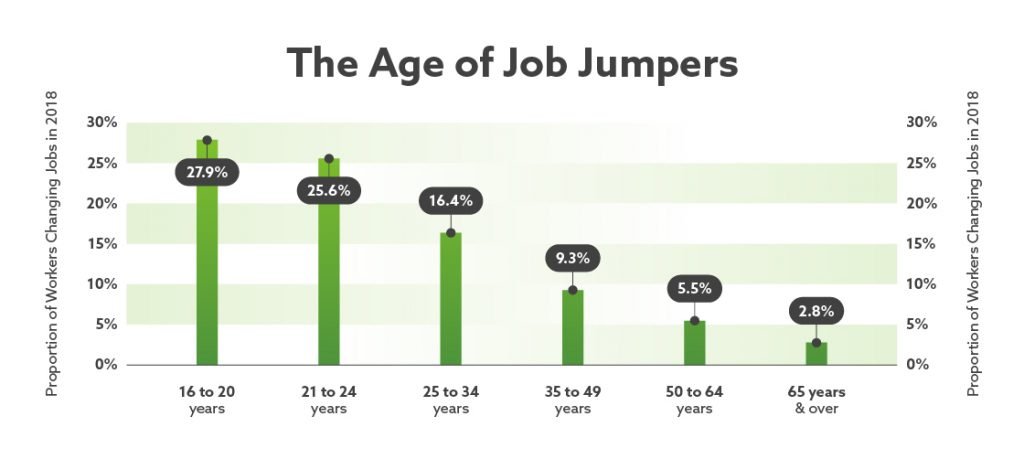
Men vs. Women
Breaking workers down by gender, we can see a significant difference for men and women in terms of earning potential. While the growth of earnings for those who stayed in their jobs was similar for both genders, men who changed jobs saw a larger increase in earnings than women. For the 2018 figures, the sample included 45.5% male stayers and 43.5% female stayers, indicating that women were changing jobs at a higher rate than men.
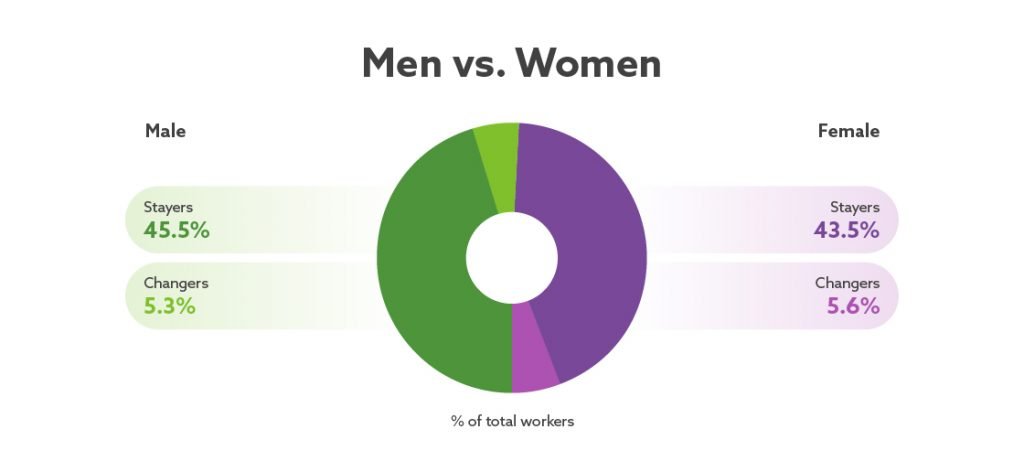
Where do Job Jumpers go?
How common is it for people to change jobs due to a relocation? And what does the movement between regions look like?
Northern Irish workers are most likely to continue working in their region, with just 4.6% of those changing jobs from 2017-2018 leaving Northern Ireland. The East Midlands region, on the other hand, had the highest proportion of workers leaving the area, with just over a quarter of those changing jobs choosing to move elsewhere.

Job Jumpers and Job Stayers by sector
When comparing the private and public sector, we can see that there are small differences between the two and the rate at which workers change jobs. In fact, in 2018 91.6% of public sector employees were in the same job as the previous year, compared to 88.5% of private sector employees.
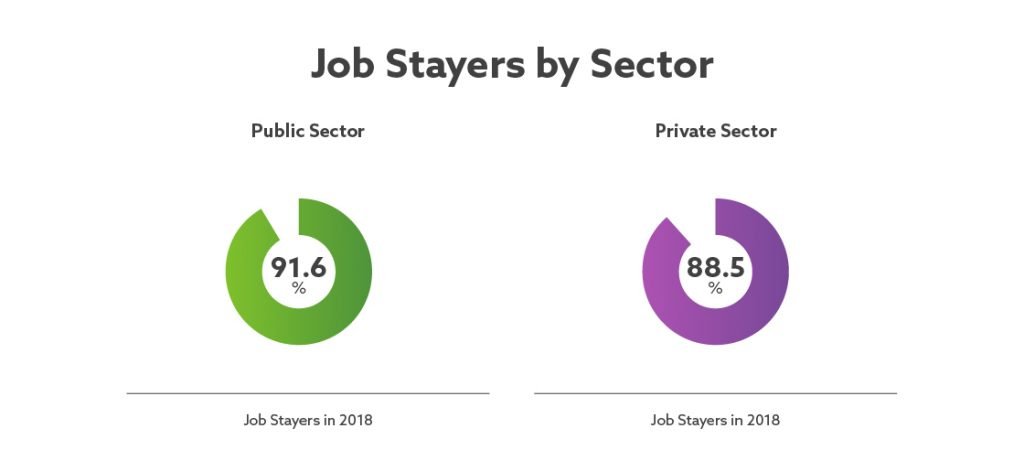
When we delve further into the data, there seems to be more of an incentive for private sectors to change jobs as they experience a higher rate of growth of earnings when changing jobs compared to public sector workers. While private sector workers have a higher growth of earnings compared to public sector workers even if they stay in their current jobs, the rate at which they can increase their earning potential by changing jobs is also higher, with a difference of 4.8% compared to 3.7% in the public sector.

Which industries see the most job changing?
When we break workers down by industry, we can see that those who work in production are much more likely to stay in their jobs, while those in the service industry change jobs far more often. However, it was those in production who actually saw their earnings increase the most when they did choose to change jobs, with an average increase of 10.5% to their hourly earnings.
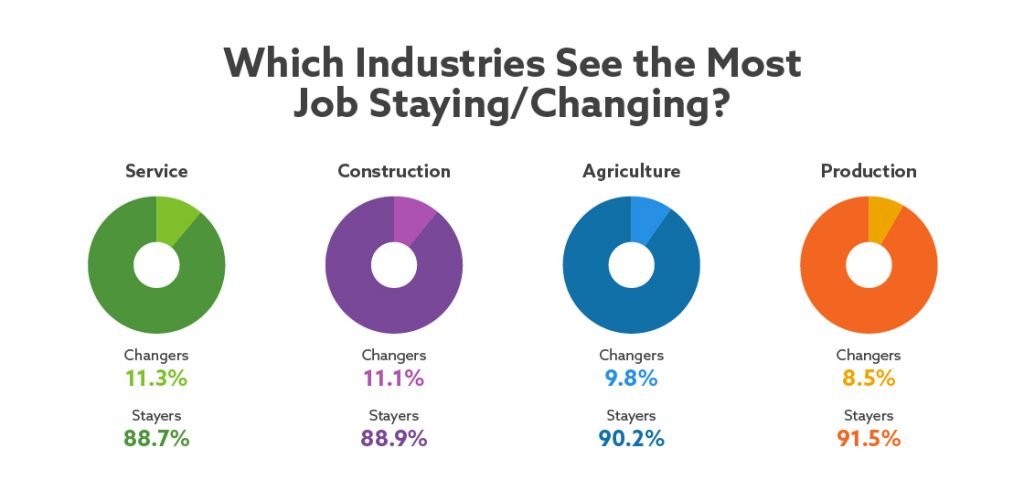

Are more people changing jobs?
Looking back over the past twenty years, the amount of people changing jobs is fairly similar to at the turn of the millennium, but there have been some significant changes in that period.
The number of people changing jobs plummeted to 5.7% in 2010, following the financial downturn, with workers generally feeling less confident of taking a risk and moving to a new job or industry.
However, in the years since, the number of people changing jobs has steadily increased as the labour market recovered, with the number of people changing jobs more than doubling between 2010 and 2018.
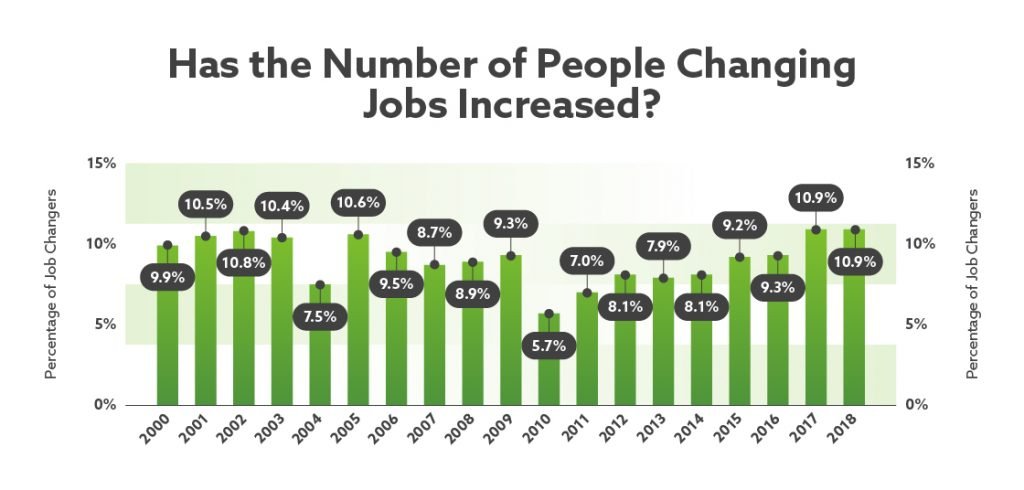
Looking at how this differs between men and women, there were more men than women changing jobs up until 2003, at which point things changed, and in every subsequent year, there has been a higher proportion of women looking to change jobs, compared to their male counterparts.
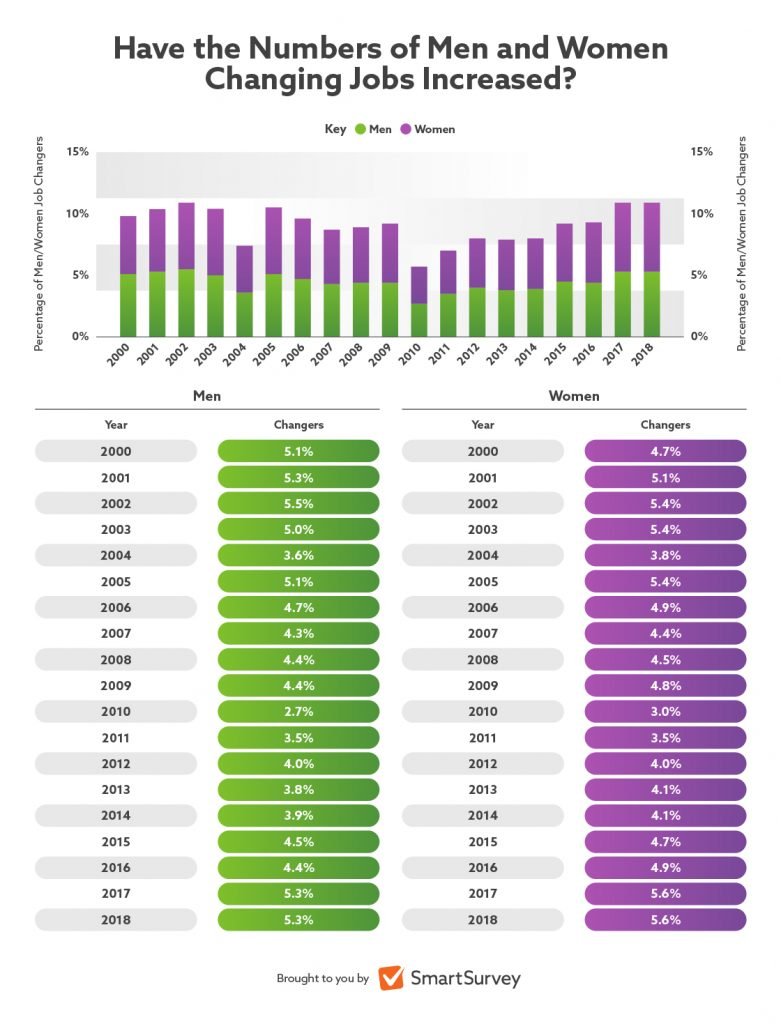
The job market continues to change and flow, but there is a lot to be learnt from the makeup of job stayers and job changers, particularly for employers who are keen to keep high-performing staff. Of course, financial compensation plays a large role in the decisions of staff on whether to stay or go, as we can see from industries where job stayers see little financial reward for loyalty.
However, while this data gives a good insight into the driving forces of employees, it cannot tell us about some of the more personal reasons why an employee may choose to leave a company. At SmartSurvey, however, we can give you that insight, with employee engagement surveys that can enable you to engage with your staff and ensure that you contribute to the number of job stayers, rather than job changers.
Methodology:
All data is taken from the ONS report – Analysis of Job Changers and Stayers – and features data from years 2000-2018 in the UK.


